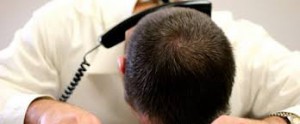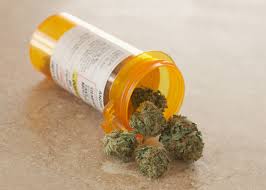So I got the manuscript back from my main editor (who works for the publisher), and to my horror the right margin was swarming with little purple boxes containing suggested revisions. This was only for Chapter 9, mind you. Everything else was pristine by now. Still, I really thought there would be little left to do…and I was just starting to sink into a warm pool of mindless oblivion. (yes, I know how that sounds)
Besides little phrasing issues, there was one serious omission, in her eyes: I had not identified the implications of “my model” for treatment. Duh. She had a point. Shouldn’t that have been the grand finale?
So I dragged my ass back to my computer and immediately sent cries of distress to Matt and Cathy, my two informal (but brilliant) editors, and then thought about it for awhile, and this is what I came up with. No, this is what we came up with —
(I’ll quote the relevant sections in two installments. Here’s the first:)
Part 1. What’s wrong with conventional treatment — i.e., treatment that fits the accepted definition of addiction as a disease?
The medicalization of addiction has provided certain benefits. Foremost among them has been the development of pharmaceutical agents that can diminish withdrawal symptoms and ease cravings. Even if these are temporary measures, they can make a real difference during the darkest of times. The disease model has also led Medicine and society to a more enlightened view of addiction, as a very human phenomenon with clear biological underpinnings, while encouraging humane treatment for those who suffer. But treatment approaches based on the disease model are too often ineffective. Addicts continue to suffer. Medicines that help people cope with symptoms do not ignite the desire to change or light up new pathways for life beyond addiction. And worse, rigid, cookie-cutter methods and institutional and monetary self-interests too often turn “treatment” into a dead end or a revolving door for people who seek help. The premise of this book is that medicalization and the disease model have outlived their usefulness.
 To bring the drawbacks of medicalization to a point, consider my claim that addiction can only be beaten by the alignment of desire with personally derived future goals. Does medically-based treatment help with that agenda? On the contrary, such treatment is almost always institutional treatment, and institutions are famous for eroding the self-direction that addicts may have mustered to get them to the door. Typically, those seeking treatment are
To bring the drawbacks of medicalization to a point, consider my claim that addiction can only be beaten by the alignment of desire with personally derived future goals. Does medically-based treatment help with that agenda? On the contrary, such treatment is almost always institutional treatment, and institutions are famous for eroding the self-direction that addicts may have mustered to get them to the door. Typically, those seeking treatment are  told to call back, unless they are ordered into treatment by the legal system, which obviously trounces self-direction from the outset. Then they are given a date to come in for an assessment. And any delay can be easily justified: “We want to make sure you’re really ready.” Finally they’re scheduled to begin treatment, weeks later. That is, if they’re lucky enough to bypass the notoriously-long waiting
told to call back, unless they are ordered into treatment by the legal system, which obviously trounces self-direction from the outset. Then they are given a date to come in for an assessment. And any delay can be easily justified: “We want to make sure you’re really ready.” Finally they’re scheduled to begin treatment, weeks later. That is, if they’re lucky enough to bypass the notoriously-long waiting  lists for state-sponsored care or afford the swank offerings of a private setting. They are assigned a bed. Ironically, their beds are the hallmark of their claim for help, but beds are where people sleep and where sick people lie when they can’t walk around; they are hardly platforms for initiative and empowerment. Then, if the waiting time for service delivery hasn’t completely undermined their incentive to change, the philosophy of medical care may do so. Addicts become patients, and patients do not participate in decisions about their care. Patients follow the regimens of authority figures who understand the workings of their disease far better than they do. So personal intention has no place in the cure.
lists for state-sponsored care or afford the swank offerings of a private setting. They are assigned a bed. Ironically, their beds are the hallmark of their claim for help, but beds are where people sleep and where sick people lie when they can’t walk around; they are hardly platforms for initiative and empowerment. Then, if the waiting time for service delivery hasn’t completely undermined their incentive to change, the philosophy of medical care may do so. Addicts become patients, and patients do not participate in decisions about their care. Patients follow the regimens of authority figures who understand the workings of their disease far better than they do. So personal intention has no place in the cure.
If you think this depiction is too extreme, you need only listen to addicts who have been through institutional care (or read Inside Rehab by Anne Fletcher). They often feel overwhelmed by the weight of depersonalization,  passivity, and submission to authority, the disinterest of staff in their personal views, and their e
passivity, and submission to authority, the disinterest of staff in their personal views, and their e xclusion from evaluations of how they’re doing, what they’re doing, and when they’ve had enough. At the outset they are told, “We’ll have to break you down so we can build you back up again”—a phrase commonly heard in institutional settings, according to Matt Robert, a friend, former addict, and group facilitator in both institutional and community-based programs. It’s not that such policies are borne of ill intent. It’s just that they’re wrong-headed. Disease model advocates like David Sack despair that “a large portion of addicts continue to use in the years following treatment regardless of the particular drug involved.” They view this as evidence that the disease of addiction is terribly serious and needs all the ammunition society can muster—which often translates to more money and more institutional beds. Yet the obvious conclusion is that mainstream treatment for addiction just doesn’t work. And since it is founded on the disease model, that model is likely to be flawed.
xclusion from evaluations of how they’re doing, what they’re doing, and when they’ve had enough. At the outset they are told, “We’ll have to break you down so we can build you back up again”—a phrase commonly heard in institutional settings, according to Matt Robert, a friend, former addict, and group facilitator in both institutional and community-based programs. It’s not that such policies are borne of ill intent. It’s just that they’re wrong-headed. Disease model advocates like David Sack despair that “a large portion of addicts continue to use in the years following treatment regardless of the particular drug involved.” They view this as evidence that the disease of addiction is terribly serious and needs all the ammunition society can muster—which often translates to more money and more institutional beds. Yet the obvious conclusion is that mainstream treatment for addiction just doesn’t work. And since it is founded on the disease model, that model is likely to be flawed.
Note that many of these conclusions derive from the sincere and sometimes devastating stories shared by you, dear readers.
Part 2 — what’s the alternative? — coming up next post.

Leave a Reply